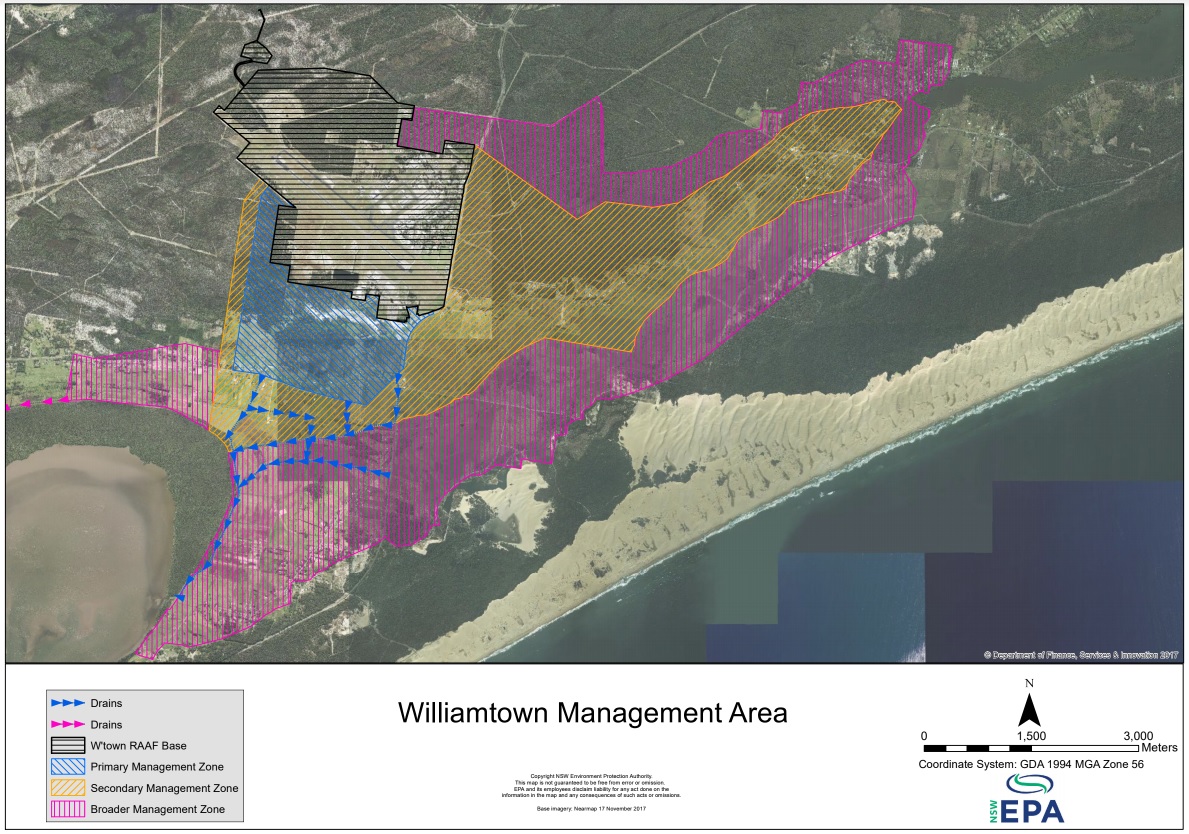Expert Panel revises Williamtown investigation area based on new data
The NSW PFAS Expert Panel has reviewed the Department of Defence’s draft updated Human Health Risk Assessment (HHRA) and recommended changes to the Williamtown investigation area to better reflect the level of potential exposure of residents to contamination in certain areas.
It has also recommended updating the precautionary health advice for residents in some locations.
The NSW Government asked Defence to conduct more testing and analysis to accurately assess the degree and extent of contamination and possible exposure pathways.
Using the latest information, the Expert Panel, chaired by Chief Scientist & Engineer Mary O’Kane, has refined the boundaries of the affected area – and divided it into three new zones, based on the levels of PFAS detected:
Primary Management Zone: PFAS has been detected – including at levels significantly above drinking water guidelines
Secondary Management Zone: PFAS is likely to be present – potentially above drinking water guidelines
Broader Management Zone: Limited sampling has revealed some PFAS in small amounts; however, given the topography and hydrology, more contamination might be found in the future
The overall investigation area will now be called the ‘Management Area’, as focus switches from investigating the contamination – caused by the historical use of firefighting foams on the RAAF base – to containment and remediation as emphasised by the NSW Government in its discussions with the Department of Defence.
Professor O’Kane said the results from sampling and modelling undertaken for the updated HHRA, to be released by Defence next month, have shed fresh light on the extent of the problem.
“This new data shows us more clearly the level of contamination in particular areas right now, and what areas could potentially be affected by contamination over the longer term – out as far as 2050,” Professor O’Kane said.
“As such, the Panel has been able to refine the overall boundaries of the management area, and tailor the precautionary advice to local residents based on the level of contamination where they live.”
Some properties in Fullerton Cove and Salt Ash have been included in the management area for the first time after new modelling revealed the potential for PFAS in certain areas.
Environment Protection Authority Chair and CEO Barry Buffier said the EPA has accepted the recommendations of the Expert Panel on behalf of the NSW Government and thanked members for their work.
“It was important to update the community as soon as possible, and so NSW EPA and NSW Health officers are out doorknocking the local area and speaking with affected residents about what the updated advice means for them,” Mr Buffier said.
“This has been an issue that has caused many in the Williamtown community a great deal of anxiety and stress, and may continue to do so for a long time.
“The welfare of the Williamtown community is of primary concern to the NSW Government and we will continue to provide them with support,” he said.
NSW Health advises residents in the management area to follow the precautionary advice to minimise their exposure.
This precautionary approach is recommended even though there is no clear, consistent evidence that PFAS exposure causes human health problems.
A map of the Management Area and tailored advice can be found on the EPA’s website: http://www.epa.nsw.gov.au/working-together/community-engagement/community-news/raaf-williamtown-contamination
Residents can also book a one-on-one discussion with an EPA officer by calling the Environment Line on 131 555.
